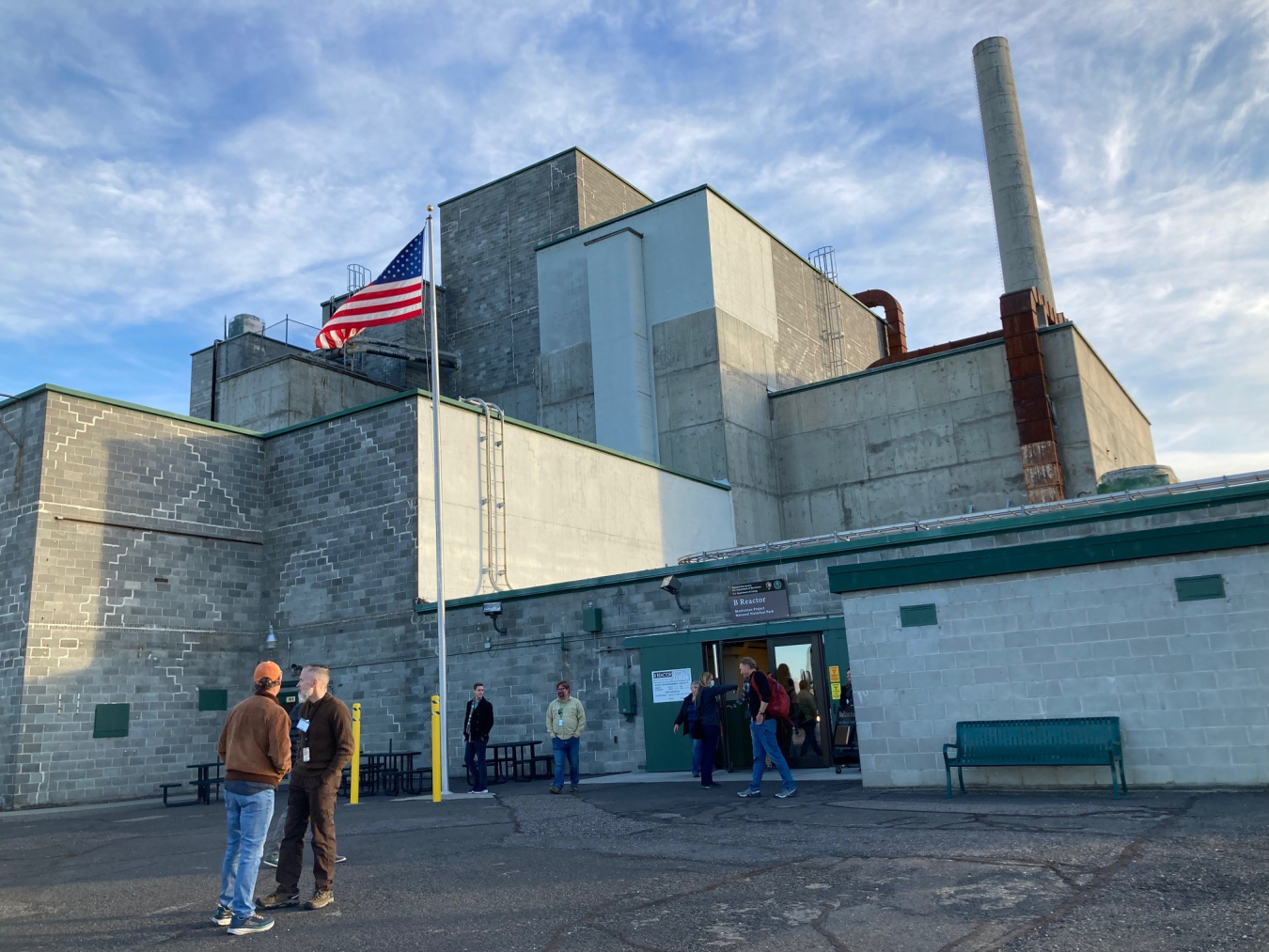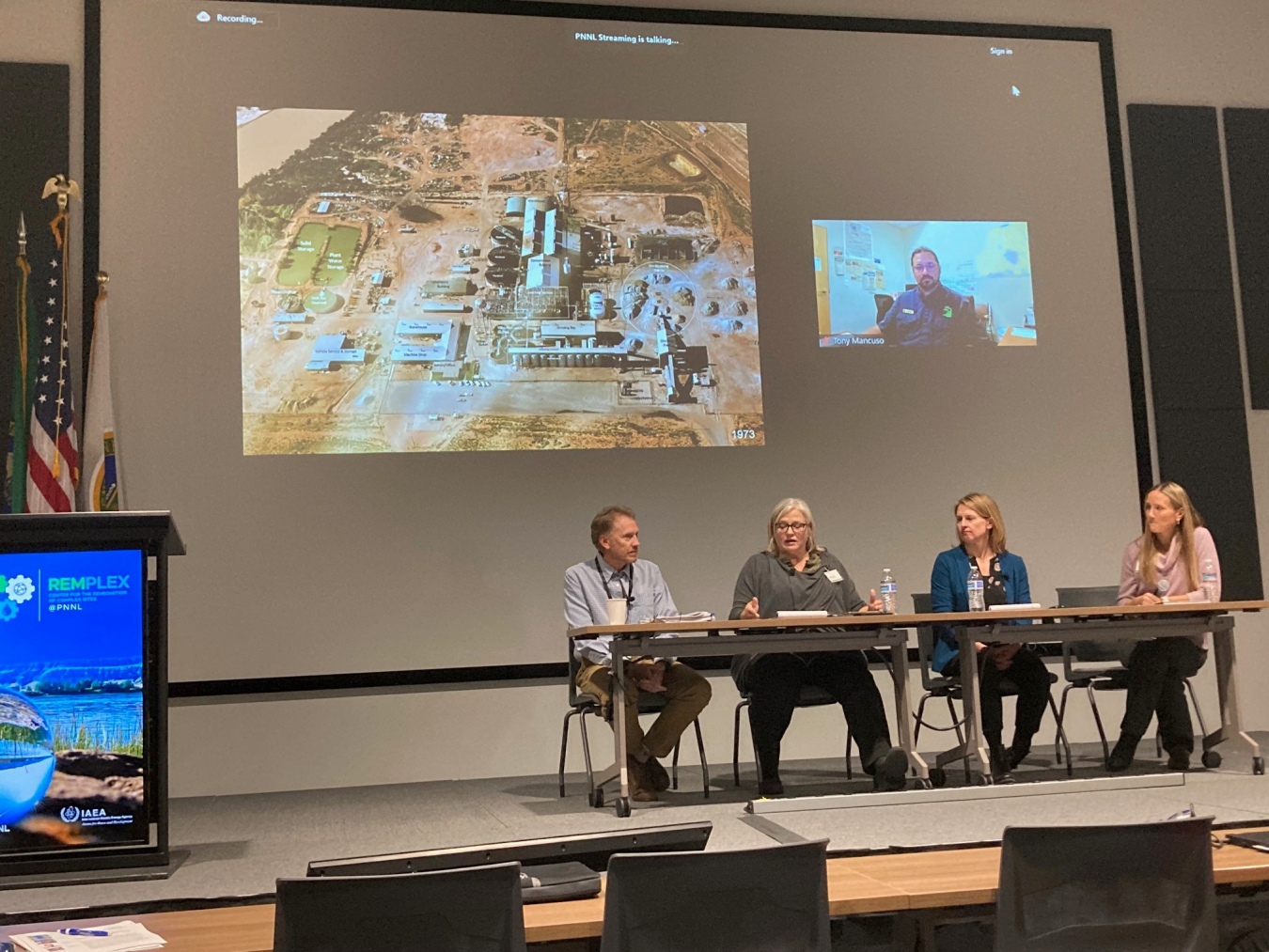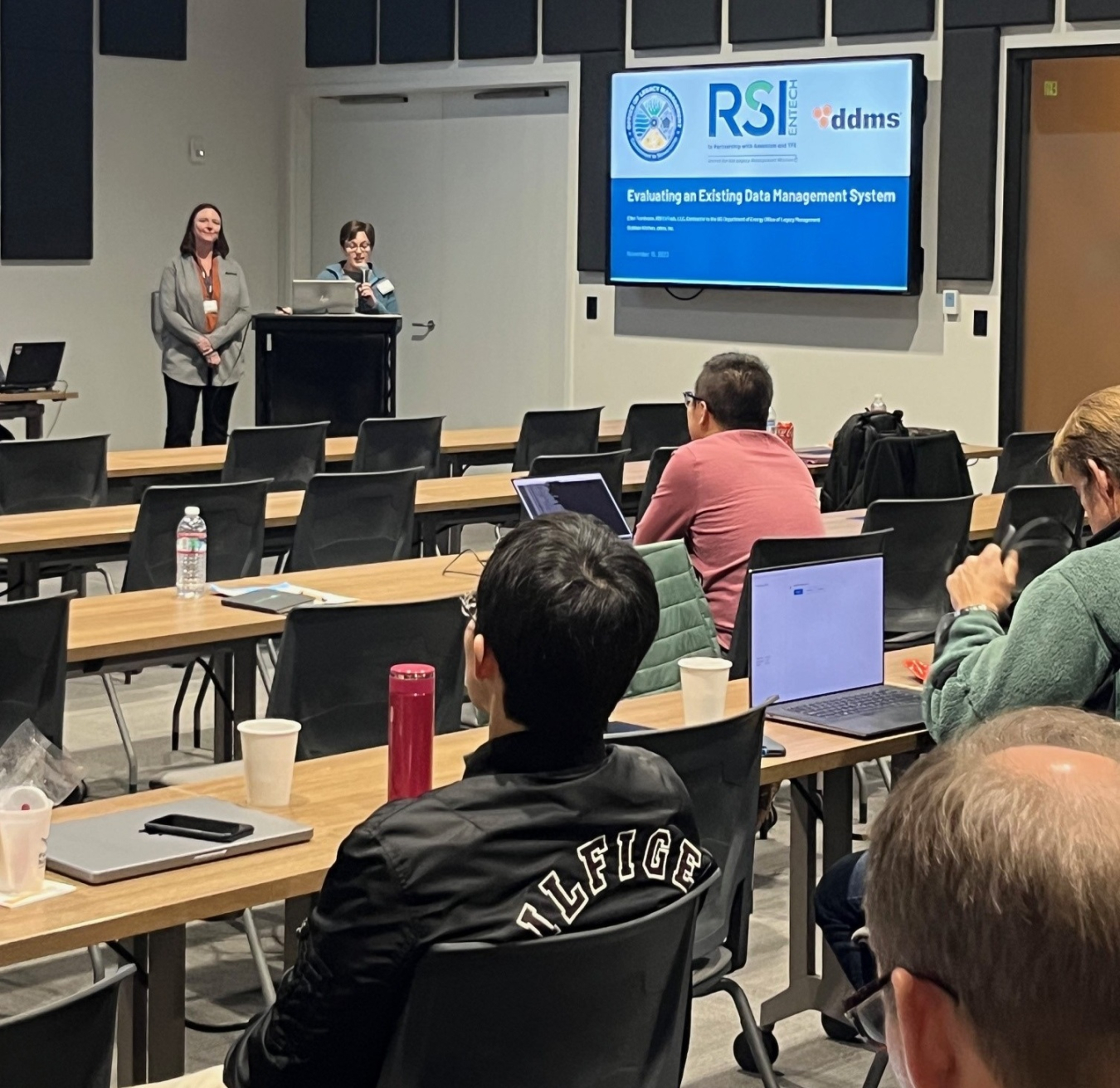Summit brings experts together to discuss remediating complex sites, where contamination is present in multiple forms and locations
January 24, 2024
Office of Legacy Management site managers and a support partner gave presentations at the Pacific Northwest National Laboratory RemPlex Global Summit on Environmental Remediation in November 2023.
In one of the conference’s technical sessions, Environmental and Spatial Data Management Lead Ellen Tomlinson presented on environmental data management systems. In another technical session, LM Site Managers’ Kate Whysner and Tiffany Drake presented on the LM-site transition process. At a catered-lunch program, LM Site Manager Mark Kautsky presented on the role of LM’s Applied Studies and Technology program in long-term surveillance and maintenance of legacy sites.
And, during a panel discussion about the former Atlas uranium mill site in Moab, Utah, LM Site Manager Annette Moore discussed the upcoming transition of the site from the U.S. Department of Energy Office of Environmental Management to LM.

“Since I am new to the LM team, it was so helpful for me to physically experience discussions about the breadth and depth of problems being solved in remediation of complex sites,” Moore said. “I made some excellent connections with scientists, met some collaborators in person for the first time, and I learned about new technologies and tools that could come into use at LM in the future. I highly recommend this conference.”
Pacific Northwest National Laboratory’s Center for the Remediation of Complex Sites (RemPlex) was formed in 2019 to provide a global forum committed to fostering technical leadership and collaborative research. The center focuses on cost-effective remediation of complex sites with contaminated subsurface environments.
RemPlex provides knowledge sharing and networking forums to support current and next-generation remediation specialists. The International Atomic Energy Agency cooperated in organizing the 2023 summit.
Drake and Whysner attended virtually and addressed the importance of planning and collaboration with cleanup organizations and their stakeholders before a rehabilitated property comes to LM. They emphasized the importance of active maintenance, surveillance, recordkeeping, and ongoing engagement with regulators, stakeholders, and community organizations as vital components of post-transfer long-term site management.
Drake is LM’s site transition program manager. Because LM expects to receive as many as 30 more sites within the next 10 years, she said, the sharing of data before the transfer helps ensure a smooth process.
“Because we have been doing transitions for a while now, and because we’re recognizing that some of these issues keep popping up, the earlier we start doing data transitions, the better off we are when these sites are eventually moved over to us,” Drake said.
Part of that pre-transfer effort involves documenting and evaluating environmental data at each site. As ESDM lead, Tomlinson discussed best practices for documenting and evaluating environmental data systems and workflows with the goal of increasing efficiency and decreasing risk. She emphasized the need for standardization and strong documentation for both incoming data and data already in the system.
In a recent evaluation of LM’s environmental data management system, Tomlinson and a subcontractor found that LM has a robust and functional environmental data management system. In general, its data workflows are thorough, effective, and supported by a very knowledgeable environmental data management team. However, the assessment identified several opportunities for adding efficiency, including improving system documentation, establishing a comprehensive system upgrade plan, and streamlining reference value tables.

In his presentation, Kautsky discussed LM’s Applied Studies and Technology program and its supplemental role in the LM mission. AS&T scientists rely on technological advancements to improve site-cleanup effectiveness, protectiveness, and sustainability, with a goal of decreasing long-term stewardship costs. Consequently, AS&T strives to move the “state of the science” in long-term stewardship strategies and methods into the “state of the practice” at LM sites.
Internally, the AS&T Program is exploring ways to improve resiliency at LM sites that are most vulnerable to climate change. For example, LM sites in arid and semiarid regions have experienced erosion faster than originally anticipated. As such, LM is responding with corrective actions where needed.
AS&T conducts in-house studies and collaborates with other federal agencies, universities, national laboratories, and the international scientific community to evaluate and understand emerging engineering and scientific advancements that may prove beneficial to LM. Along those lines, LM’s investment in multiyear studies of cover performance has led to the development of innovative approaches to improving the long-term sustainability of disposal cell covers.
These studies are also leading to alternative disposal cell designs and improved performance-evaluation methods and policies. AS&T study findings, together with other cover-performance projects, provide support for managing conventional and evapotranspiration covers based on health and regulatory risks.
Kautsky complimented RemPlex organizers and said the conference gave attendees a great opportunity to connect with their peers.
“These folks orchestrated a well-run summit, maintained a smooth agenda, and provided an environment for meaningful discussions,” he said. “The venue was perfect. It had a contemporary flair that enhanced the experience. I renewed some friendships and enjoyed my time at the summit.”
The RemPlex conference takes place every year in Richland, near the Hanford Site in southeast Washington state. The B Reactor at the Hanford Site was the world’s first large-scale nuclear reactor, built during the Manhattan Project in the early 1940s.
RemPlex attendees toured the reactor, which was built to make plutonium from naturally occurring uranium in the effort to build the world’s first nuclear weapons. The B Reactor is now part of Manhattan Project National Historical Park.
“When you sit in an office and manage environmental data, you don’t get many opportunities to visit current or future LM sites,” Tomlinson said. “Touring the site and visiting the B Reactor gave me a glimpse of both the historical significance of the site and the ongoing cleanup at a site that will one day be in the LM portfolio.”

